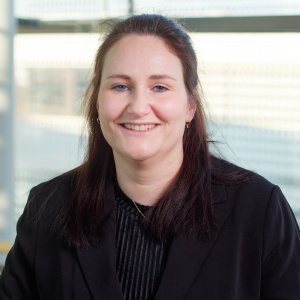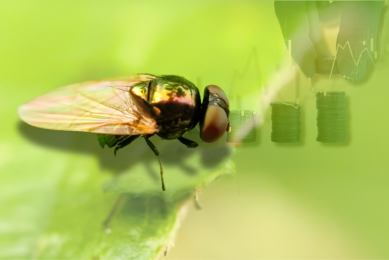IFTC Asia: Feed processing a key to sustainability
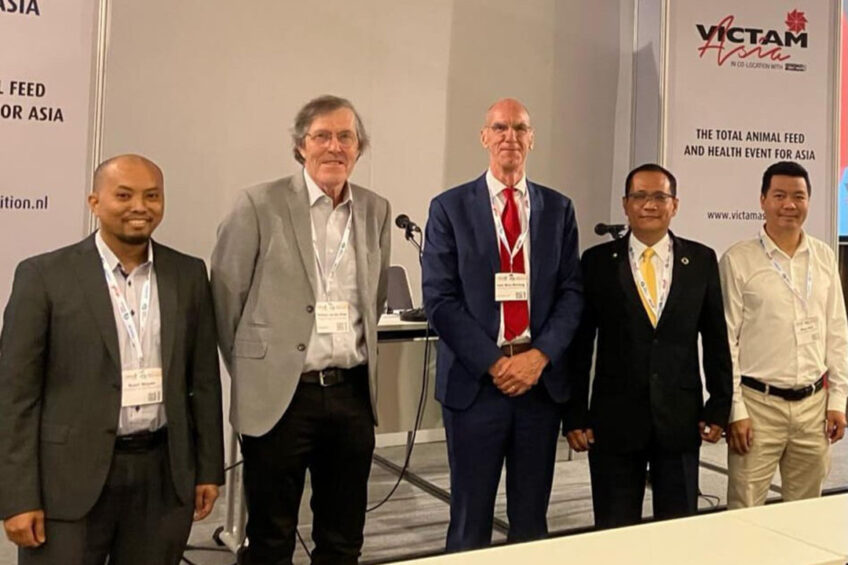
During Victam Asia 2024, Wageningen University and the Victam Foundation hosted the 4th edition of the International Feed Technology Conference (IFTC). International researchers highlighted the developments in the field of animal feed technology in Asia, with focus on sustainability.
The International Feed Technology Conference gathers people from research institutes and the industry from around the world, to exchange knowledge and recent developments. According to Prof Leo den Hartog, chairman of the Victam Foundation and host of the event it is of great importance to talk about feed technology nowadays since the processing of ingredients and manufacturing of compound feed is an integral part of animal production. “In this way high quality diets will be produced by the transformation of coproducts and other raw materials into high quality feeds. Moreover, feed processing should be done in a sustainable way by minimising energy use and carbon footprint.”
Poultry production in Vietnam
Dr Mai Anh Khoa from the Thai Nguyen University, Thai Nguyen city in Vietnam talked about the developments in poultry production in his country. He estimated a presence of about 520 million chickens having a yearly increase of 6%. Poultry production in Vietnam has a strong competition with countries such as Thailand, Brazil, and China. Some 80% of the production takes place on a small scale.
Reason why one of the challenges in research is to elevate this scale of production. A further research objective is to find alternative resources as feed ingredient. In Vietnam especially corn, soybean meal and rice bran are important diet ingredients. More local ingredients should be examined as potential sources for animal feed, so also in Vietnam ideas for a more circular way in agriculture are encouraged: Dr Mai Anh talked about the opportunity to use more rice co-products, leaves. He also presented data on the inclusion of specific feed additives as enzymes and probiotics.
Use of biomass as feed ingredient
Next speaker was Dr Nazri Nayan from the University Putra Malaysia, Kuala Lumpur, Malaysia, he talked about bioprocessing of agro-industrial biomass for ruminant diets in the ASEAN region. Agro-industrial biomass can be defined as organic residues that are produced after crop harvesting and processing. One of the major industries in the ASEAN region is palm oil production and the major food commodity is rice (paddy). Processing of these crops results in various residues that have a different nutrient content (see table 1).
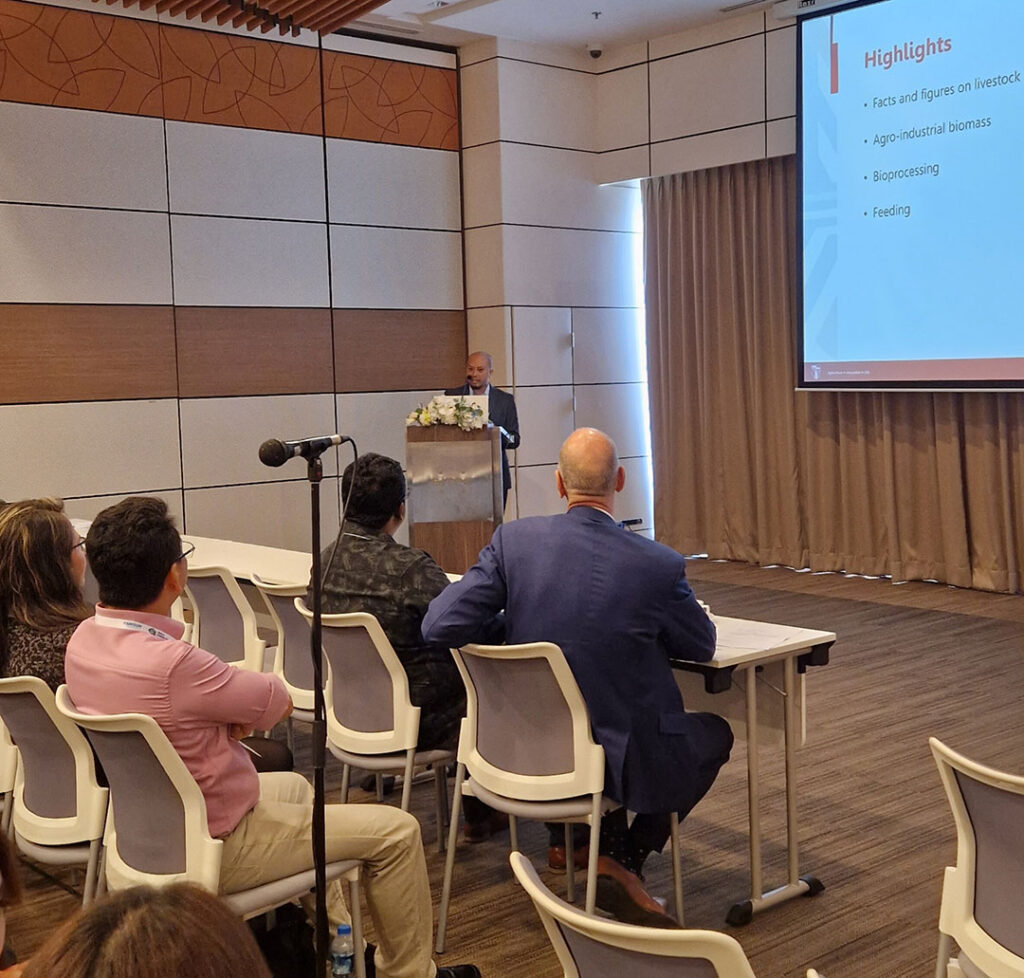
Dr Nayan: “It shows that biomass has some constraints regarding nutrient values for livestock, since the energy and protein contents are low. In addition, agro-industrial biomass has a low palatability and digestibility.” Dr Nayan explains that bioprocessing of these materials can help to enhance the nutritional value. The professor shows several treatment methods and emphasizes that any treatment that is focused on decreasing the lignin content of the material, will increase the available carbohydrates and increases the ruminal degradability of the biomass. Another method is the use of microbes like fungi and bacteria, explains Dr Nayan. “These microbes will degrade the lignin-carbohydrate complexes and can therefore increase the digestibility of biomasses.”
Although the professor sees advantages and opportunities for using agro-industrial biomass as feed ingredient, he also indicates the challenges: “It could be difficult when products are exported, since the EU is very strict about what is allowed to use as feed ingredients. Also, performance of the animals may be less than when using mainstream grains and the costs higher because of the process that is needed. That’s the opposite of what we want: efficiency.”
Next speaker, Dr Pairat Srichana, Senior Vice President CP, Thailand, agrees on the fact that still a lot is unknow: “We need to understand how to use our staple crops and by-products as an ingredient for animal feed. Some are afraid of competition with the human food sources, however a lot of times there is a surplus in production. Now, with the higher raw material prices, why not use more paddy rice for animal feed.” He thinks it is going to be a challenge to investigate how to apply these alternatives in livestock feed but is optimistic: “When I was in school there were no advanced technologies as we know them today, developments are going fast. It’s our job and that of the next generation to work on this matter.”
In the past diets were formulated based on least costs, however I expect that soon we’ll formulate diets based on sustainability.
Dr Pairat Srichana
Diet formulation based on sustainability
According to Dr Pairat Srichana in the past, feed research was focused on understanding the nutrients and being efficient, but according to him it moves to another direction: “In the past diets were formulated based on least costs, however I expect that soon we’ll formulate diets based on sustainability. We already start to consider emission factors.” Another important field to consider is gut health and getting a better understanding of the microbiome, since there are many things that we still not understand, says Dr Srichana. He also emphasizes the importance of digitalization and the use of data in moving towards precision nutrition.
“It’s becoming more important to work together, industrial and academic researchers to speed up this process,” according to Dr Srichana.
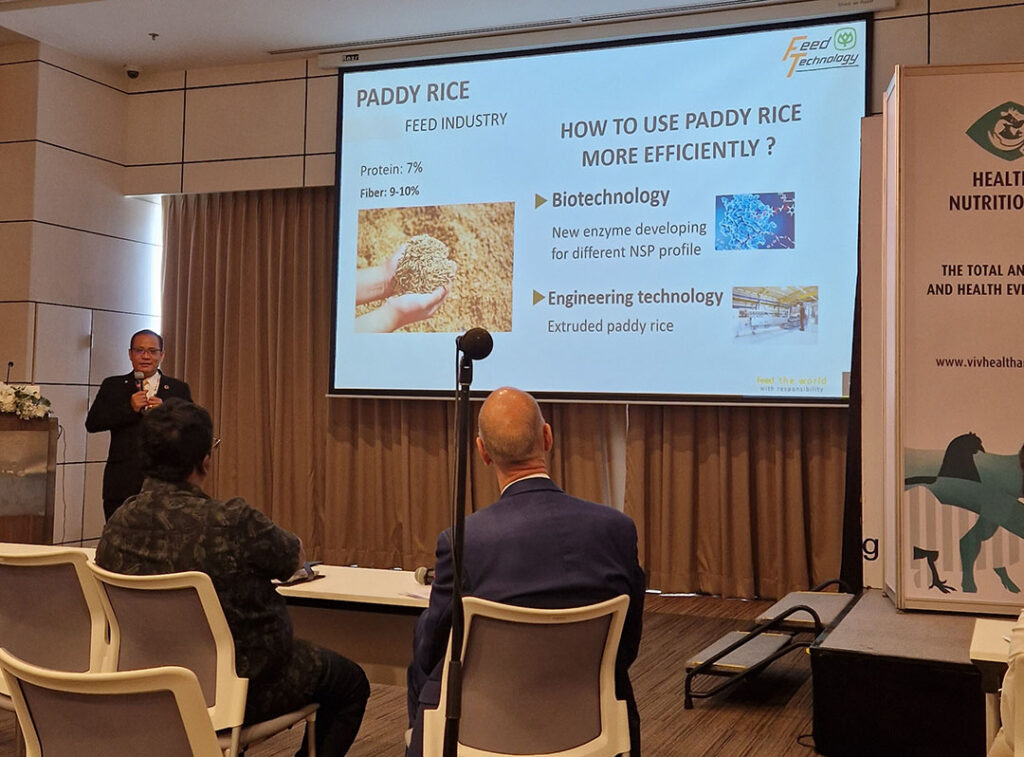
Processing of new ingredients
Last speaker, Dr Thomas van der Poel from Wageningen University, the Netherlands, discussed the challenges related to feed technology research in Western Europe. He talked about how the EU feed industry is trying to become more circular and sustainable, by using co products and alternative ingredients like rapeseed meal. However, including these new ingredients in to animal diets asks for adjustments in the processing process. Dr Van der Poel presented a study that looked at rapeseed meal and the effect of toasting. The study showed that toasting has a positive effect on anti-nutritive compounds like glucosinolates (GSL) but a negative effect on lysine. However, for pig diets, it seems that pelleting the rapeseed meal may improve intestinal digestible lysine content. There is still plenty to discover and work to do on new ingredients and the process technologies, appears from the presentation.
Dr van der Poel added that there is a lot happening in the EU regarding agriculture: “There are the concerns about climate change, critical views on animal husbandry and topics like deforestation, there are disease outbreaks and a shortage of labour.” Consequently, the agriculture industry must become more sustainable and efficient, by among other things using more co-products, taking the CO2 footprint into account in diet formulation and use less human-edible products in animal feeds. Van der Poel: “It is possible that in the future the use of human-edible sources in animal diets isn’t allowed anymore.”
In the field of feed technology research Dr van der Poel notices that a lot of studies are looking at beans or nuts or processing techniques for algae and insects. In addition, artificial intelligence is topic of interest, however Van der Poel thinks it will take some time before it is applicable, since there are still not many publications and results.


